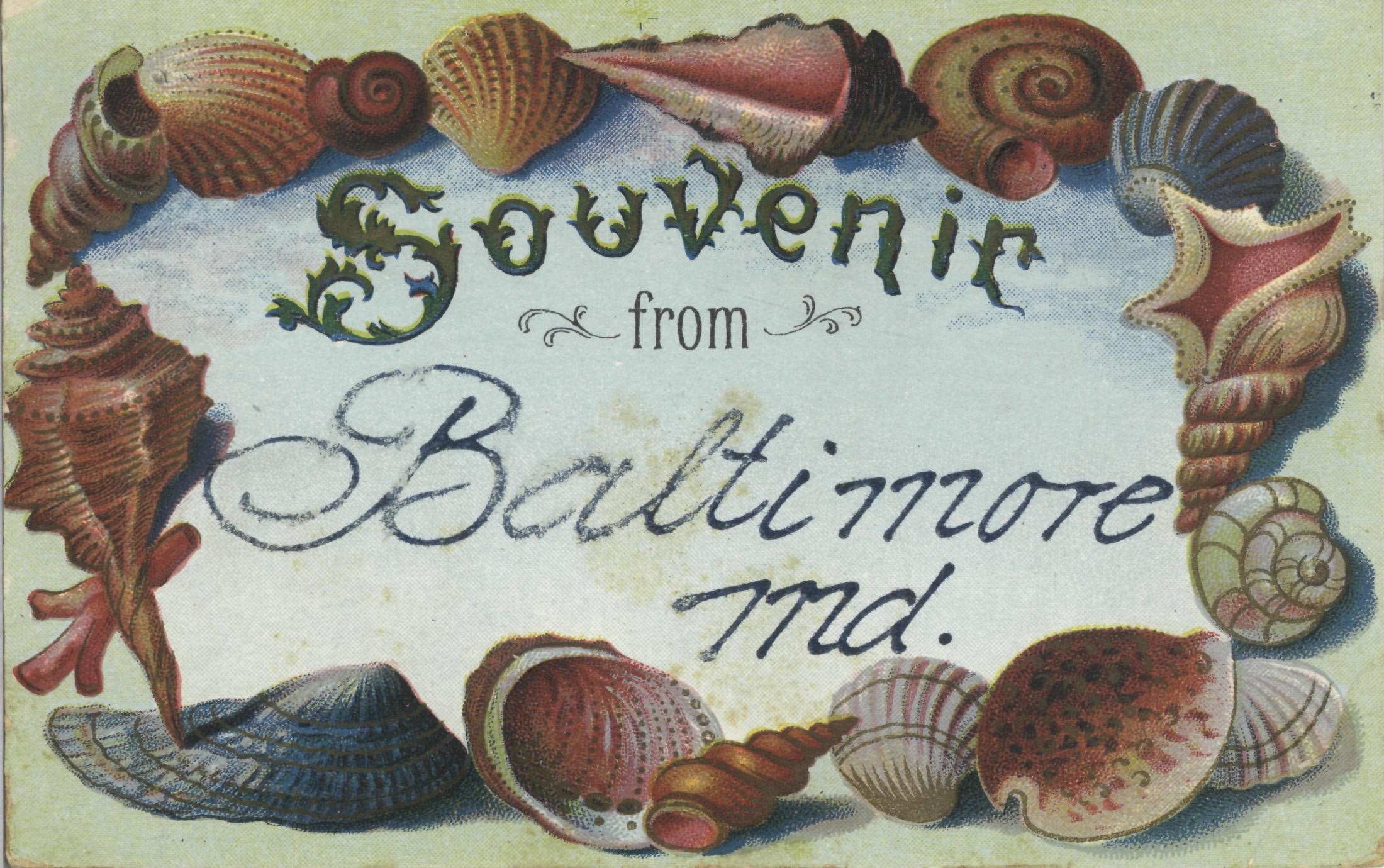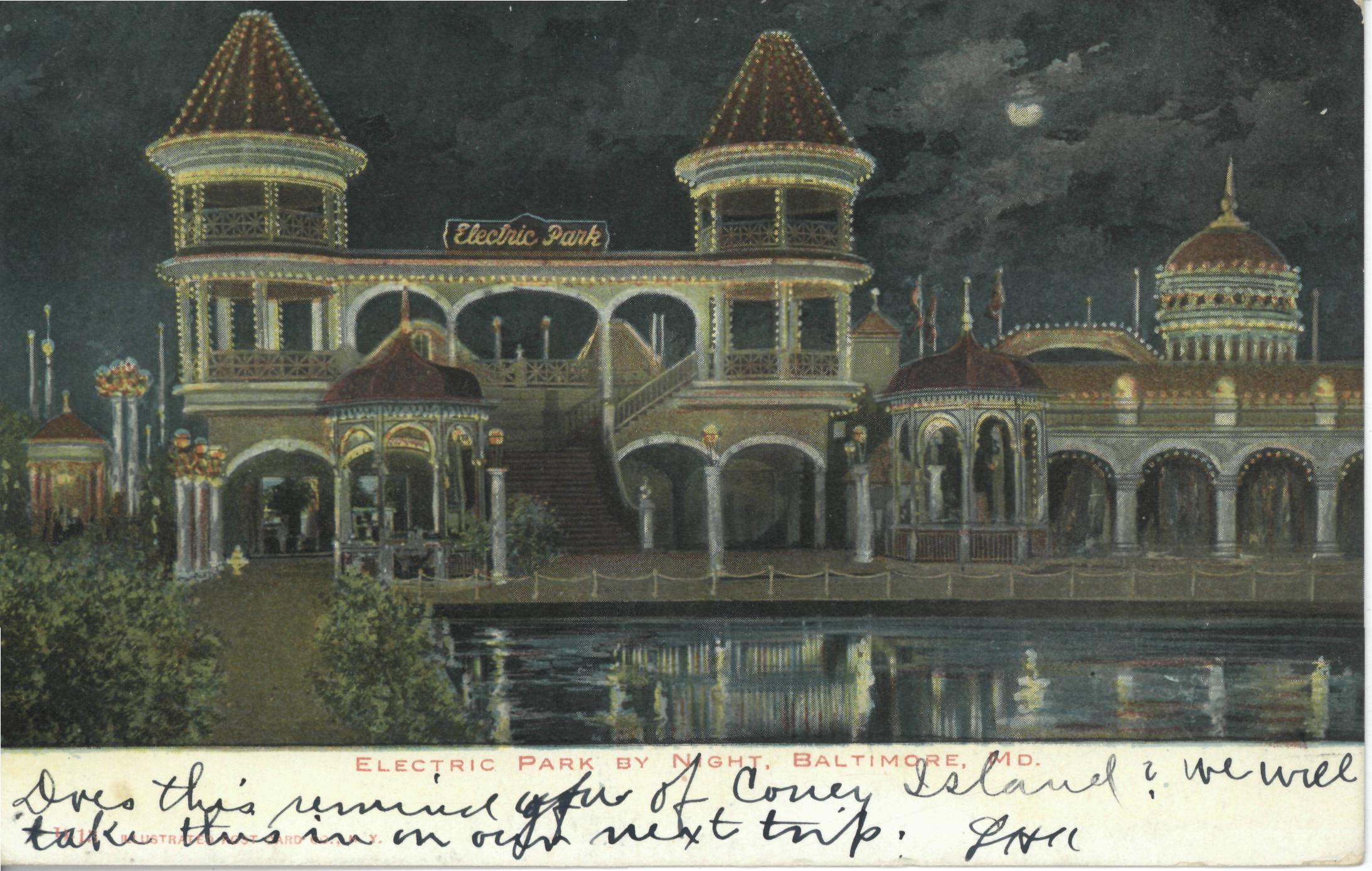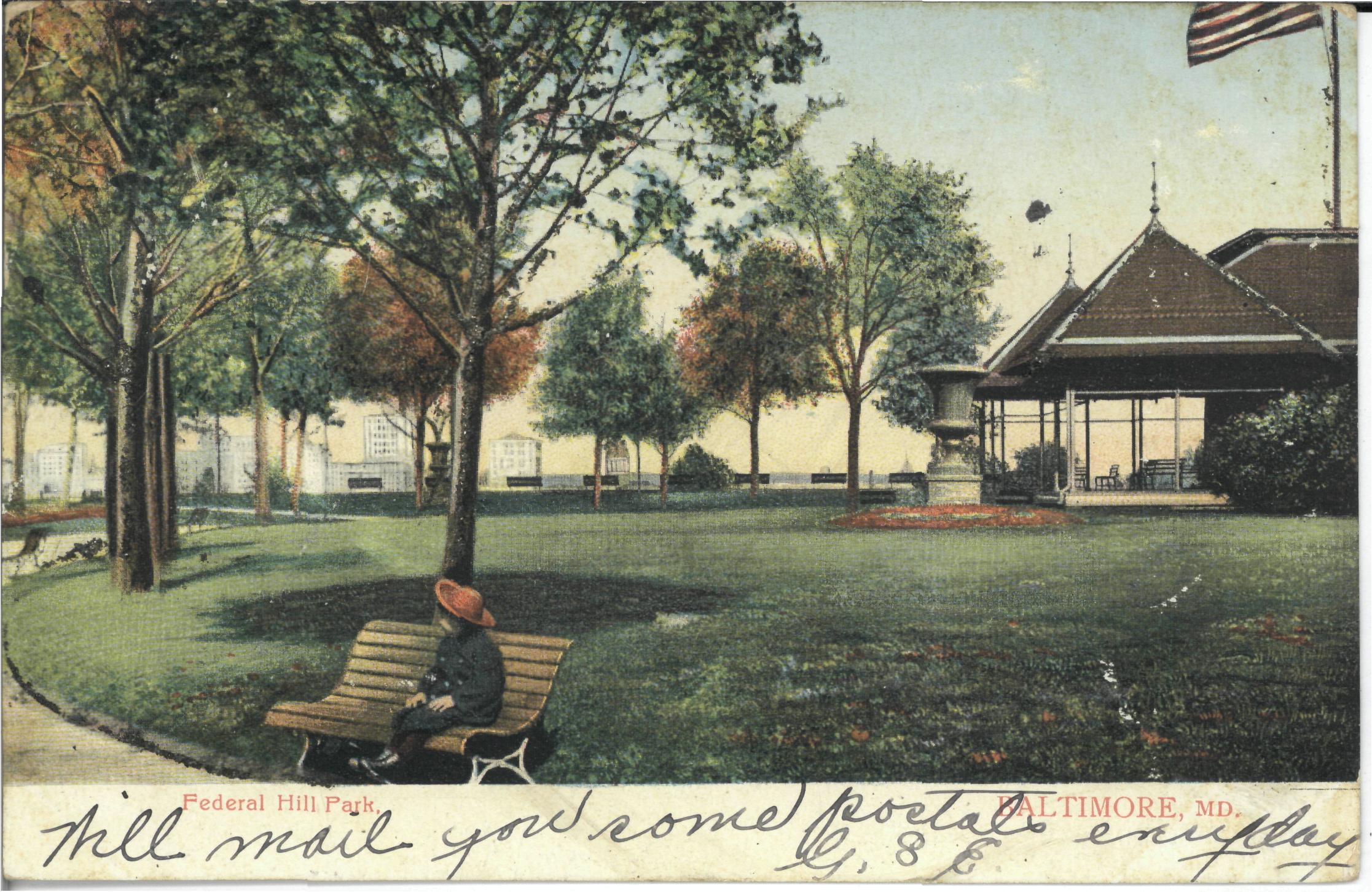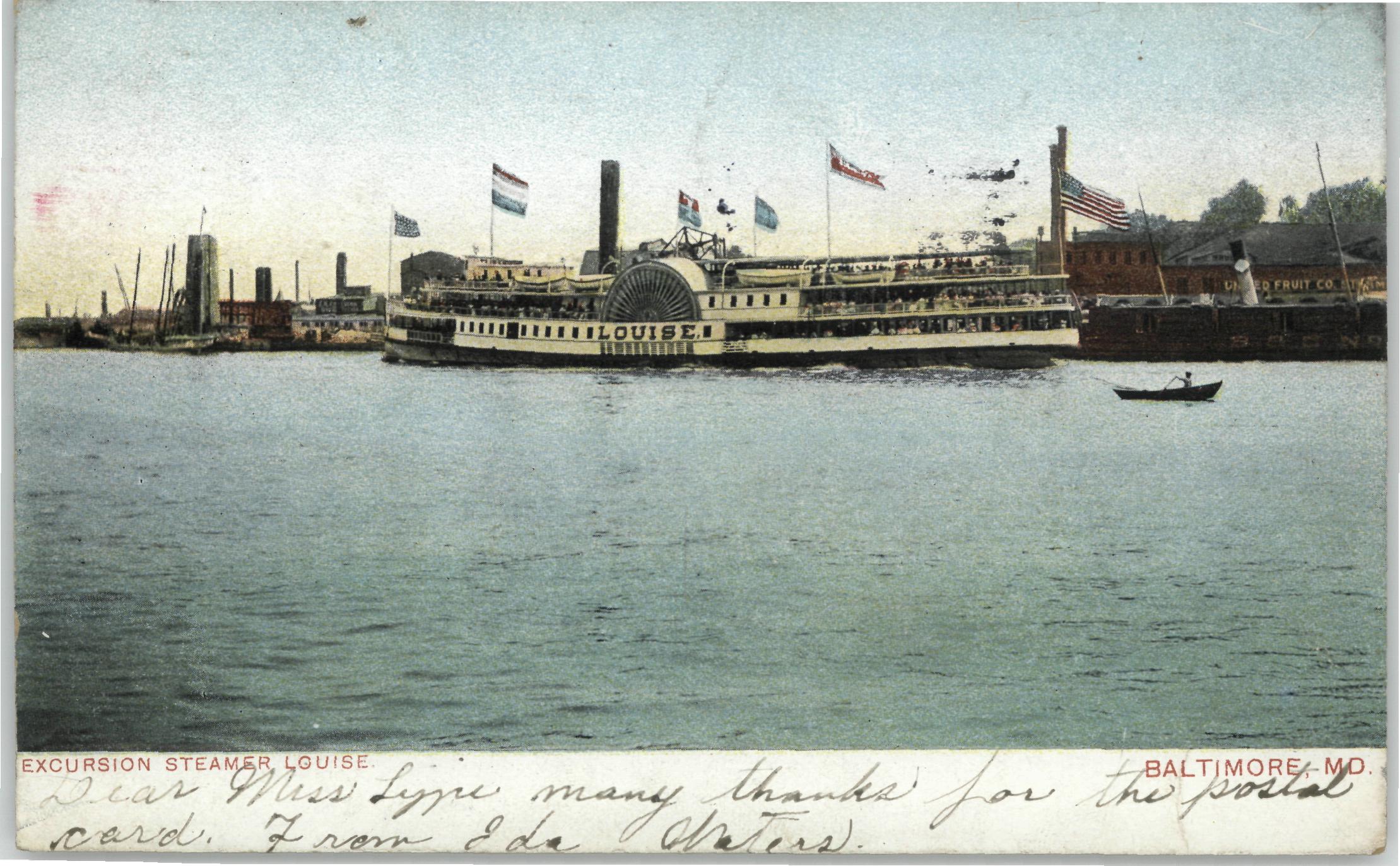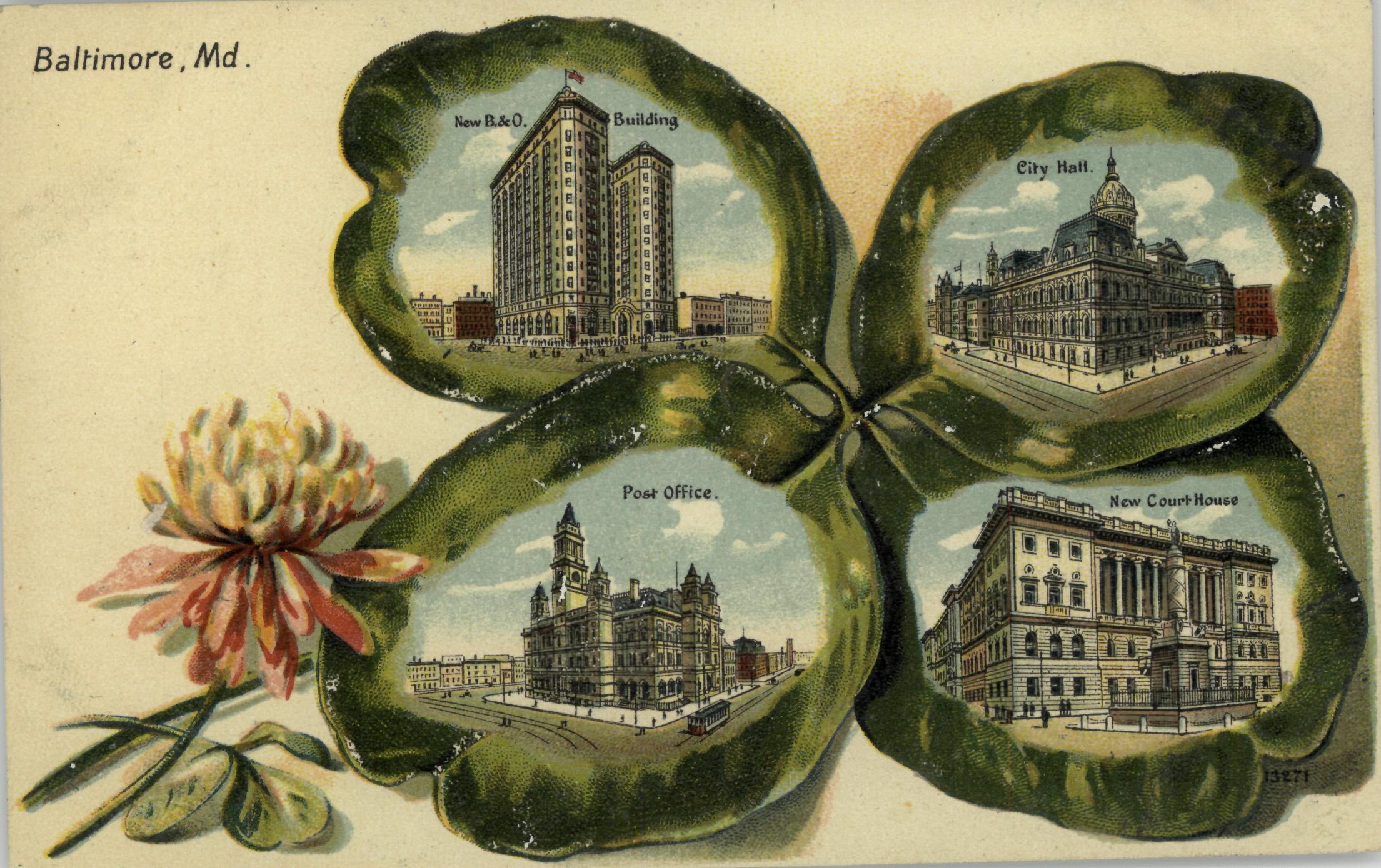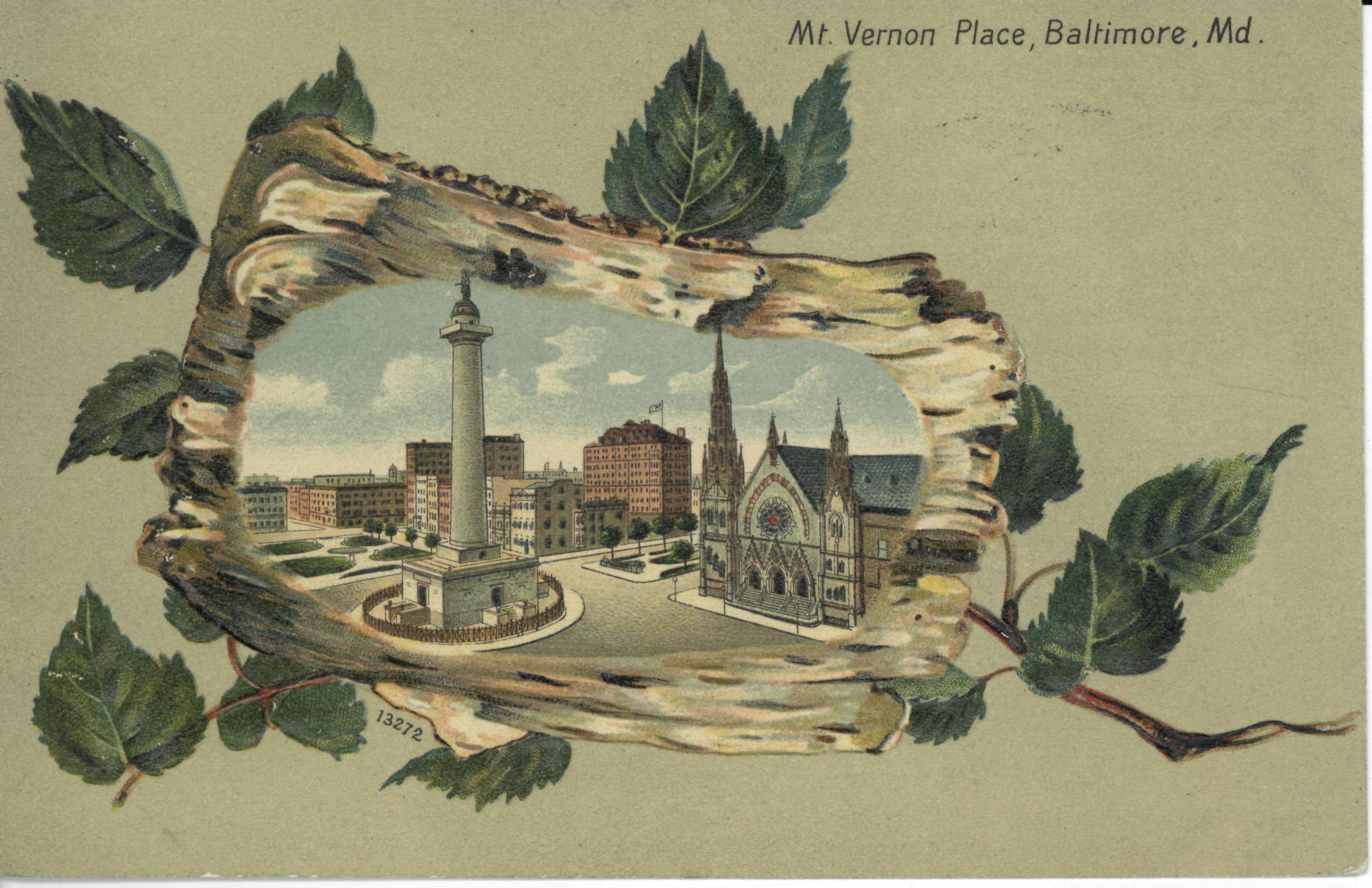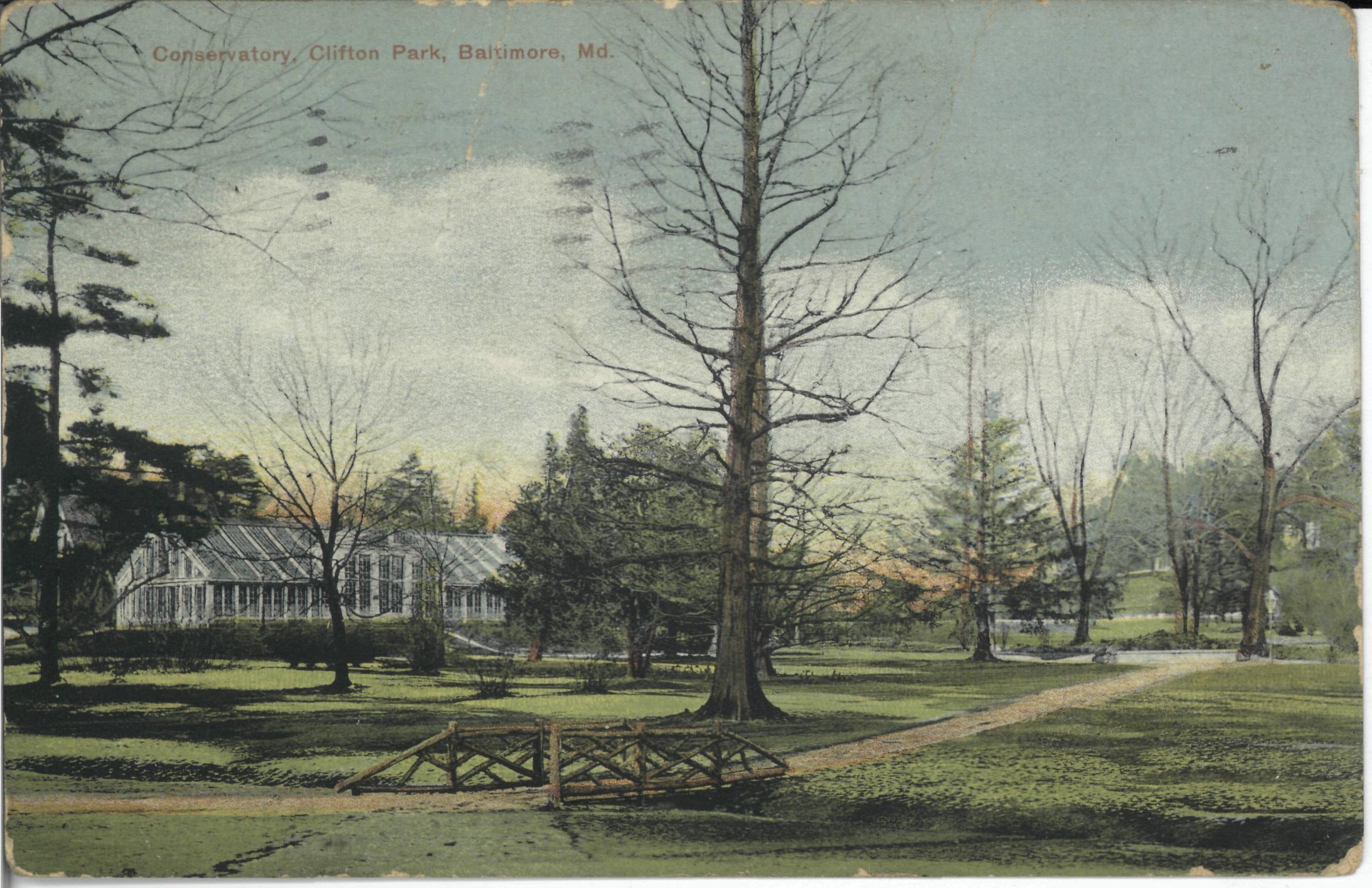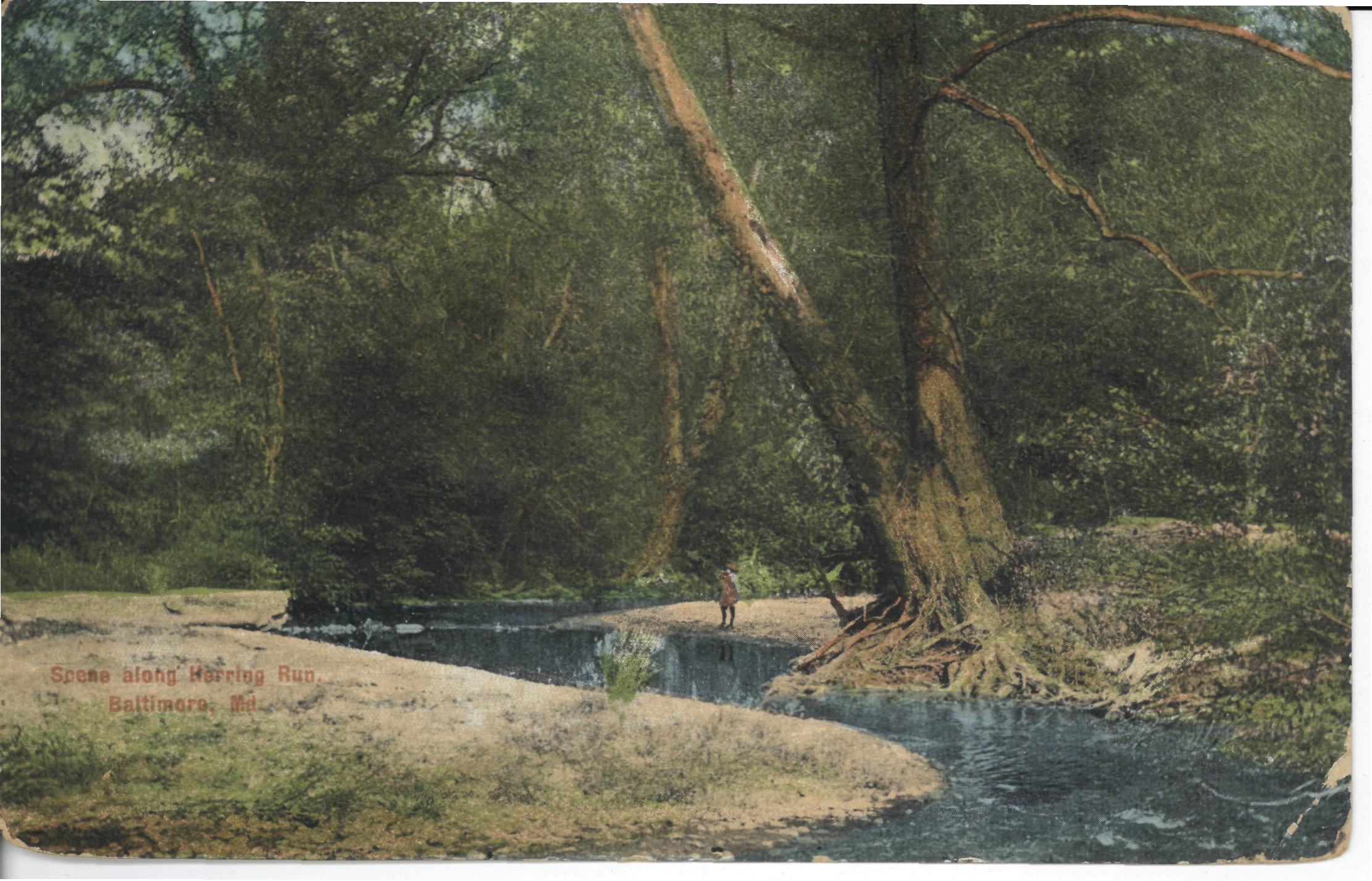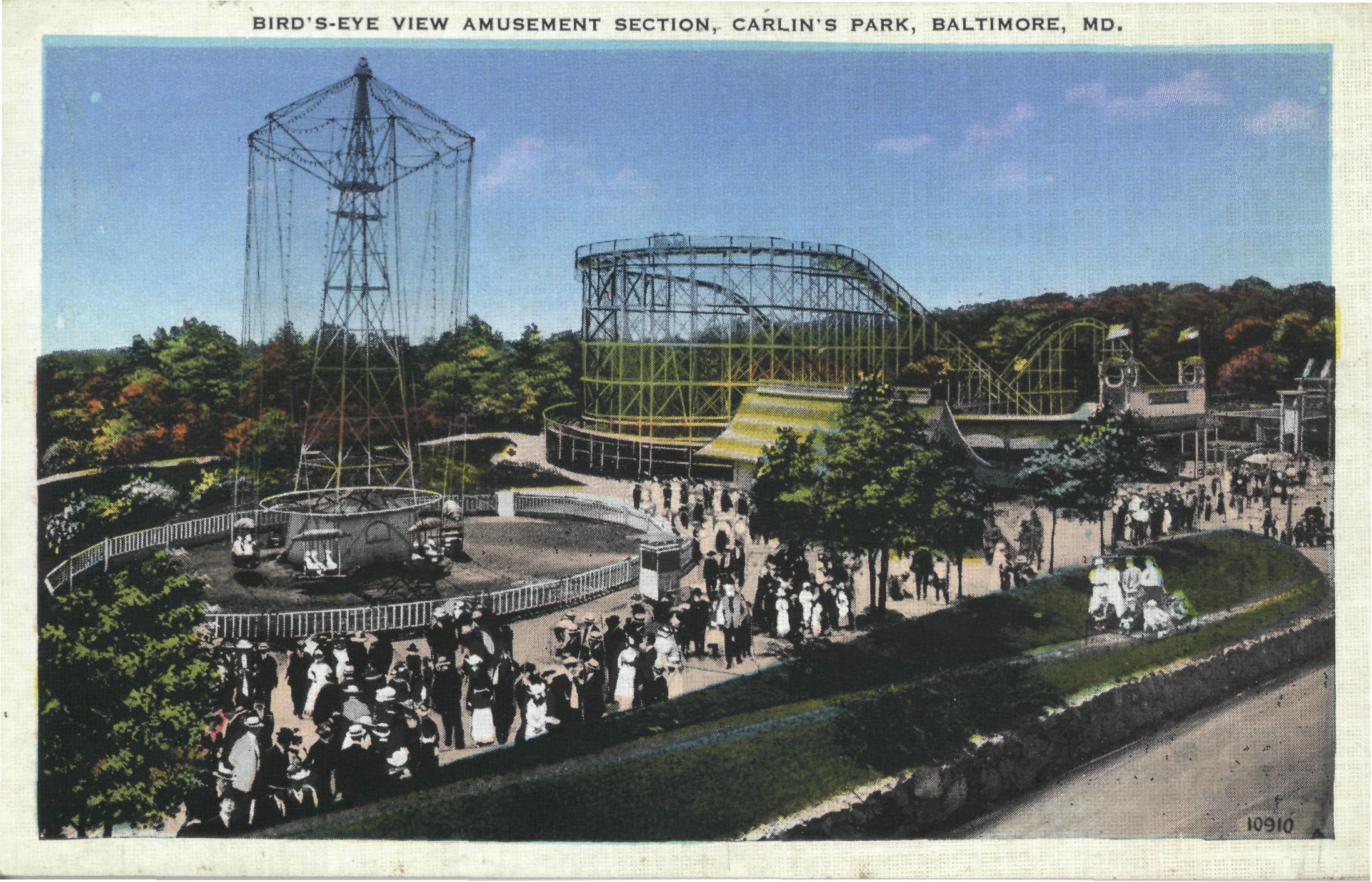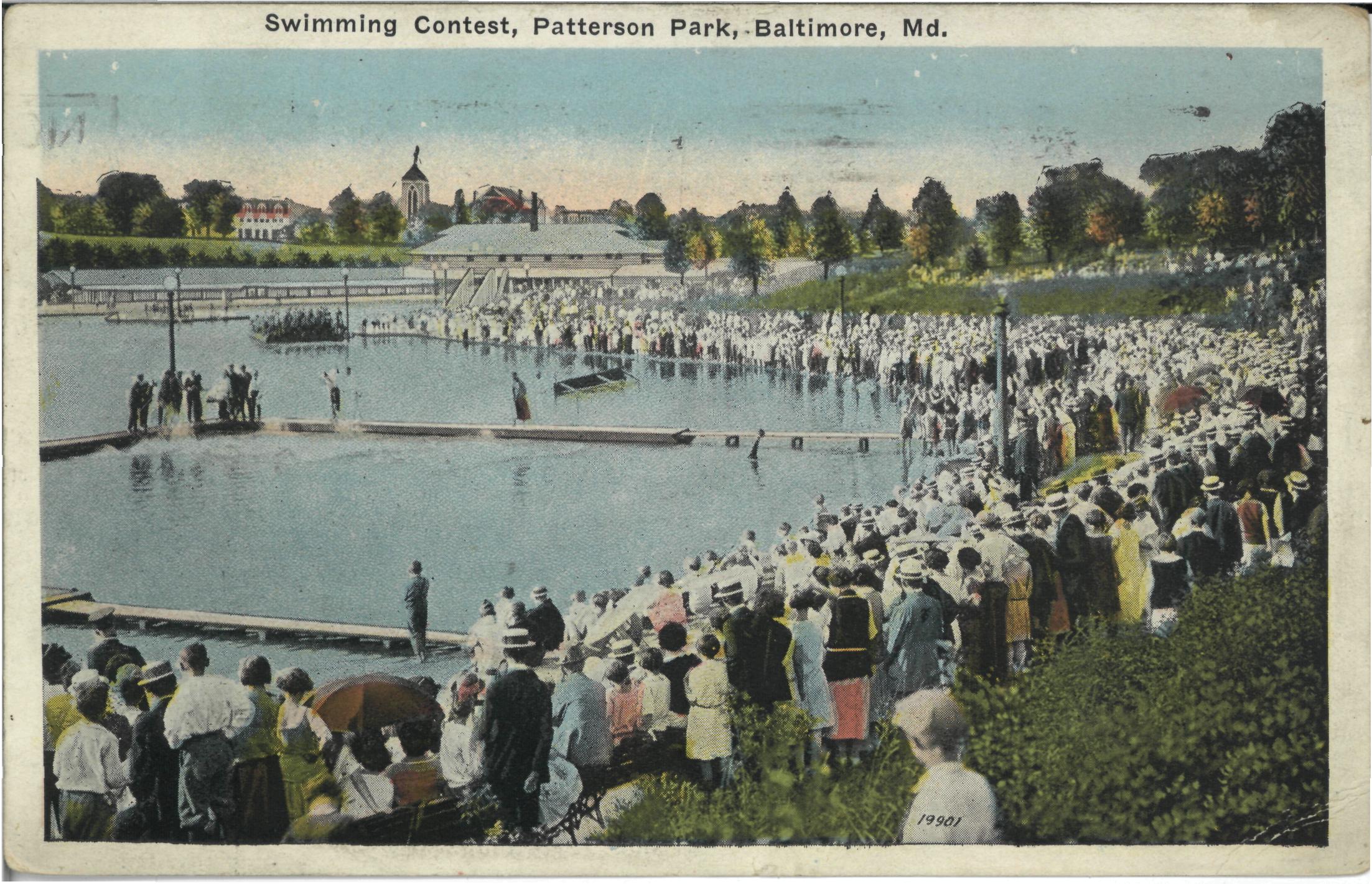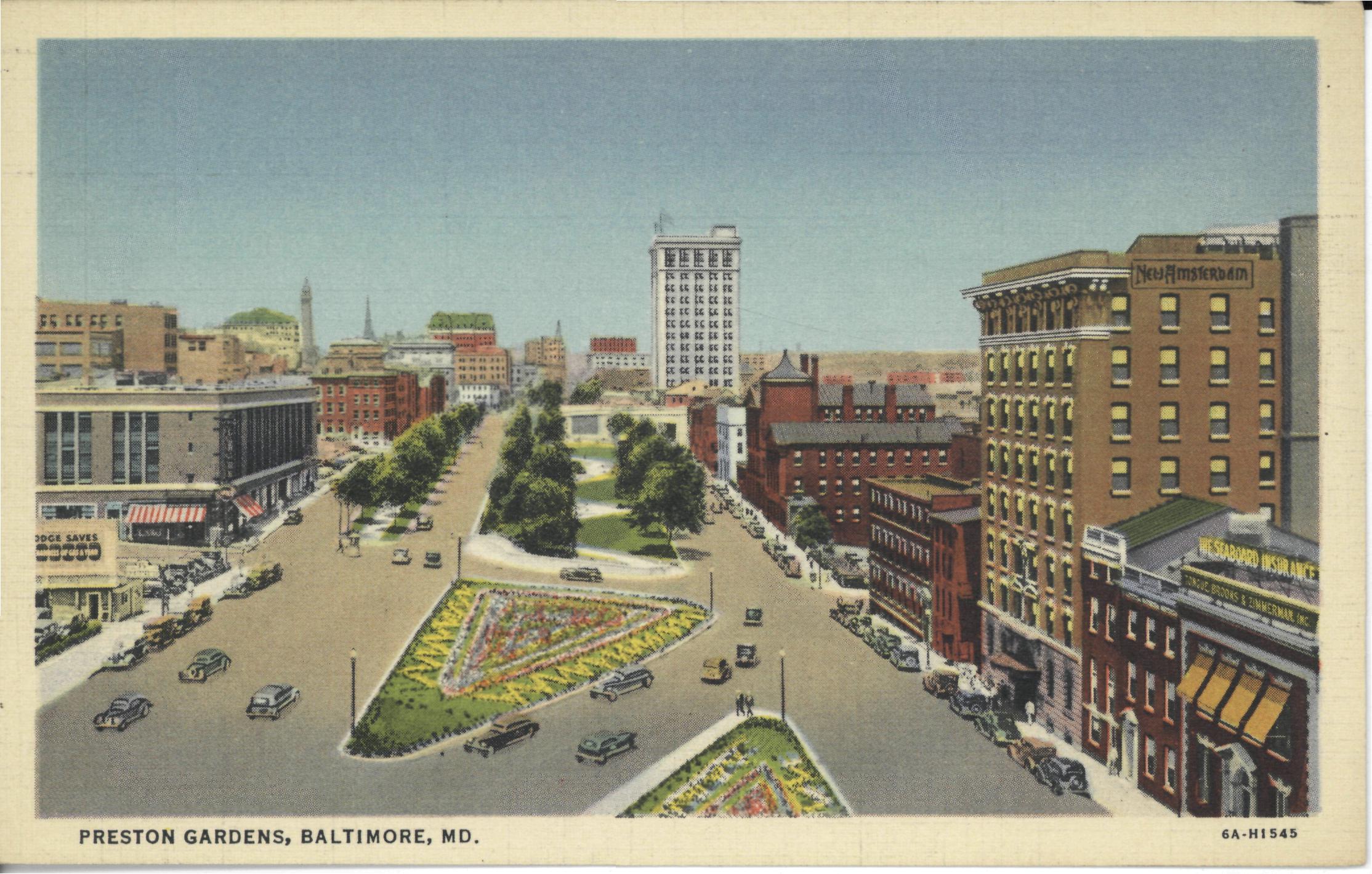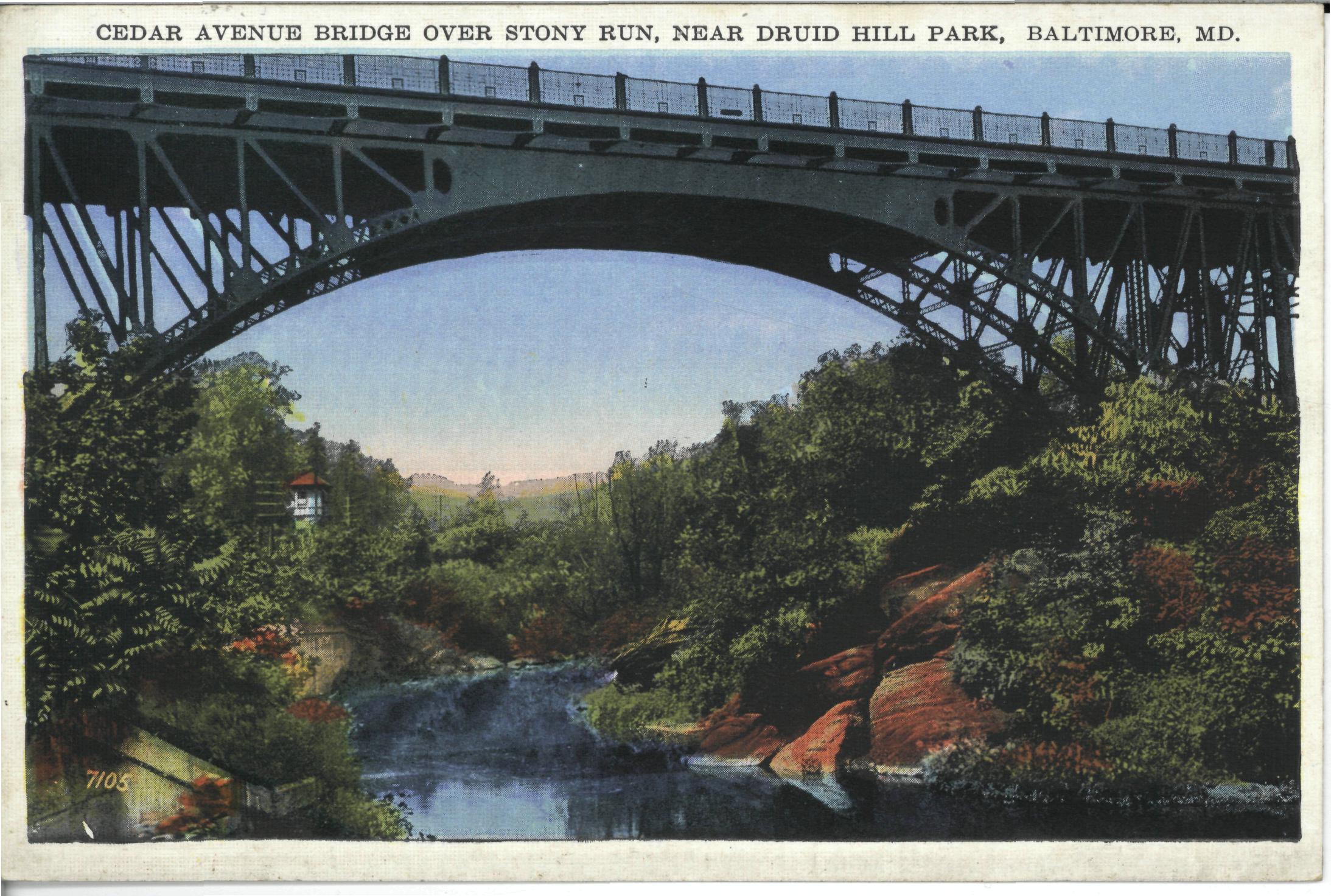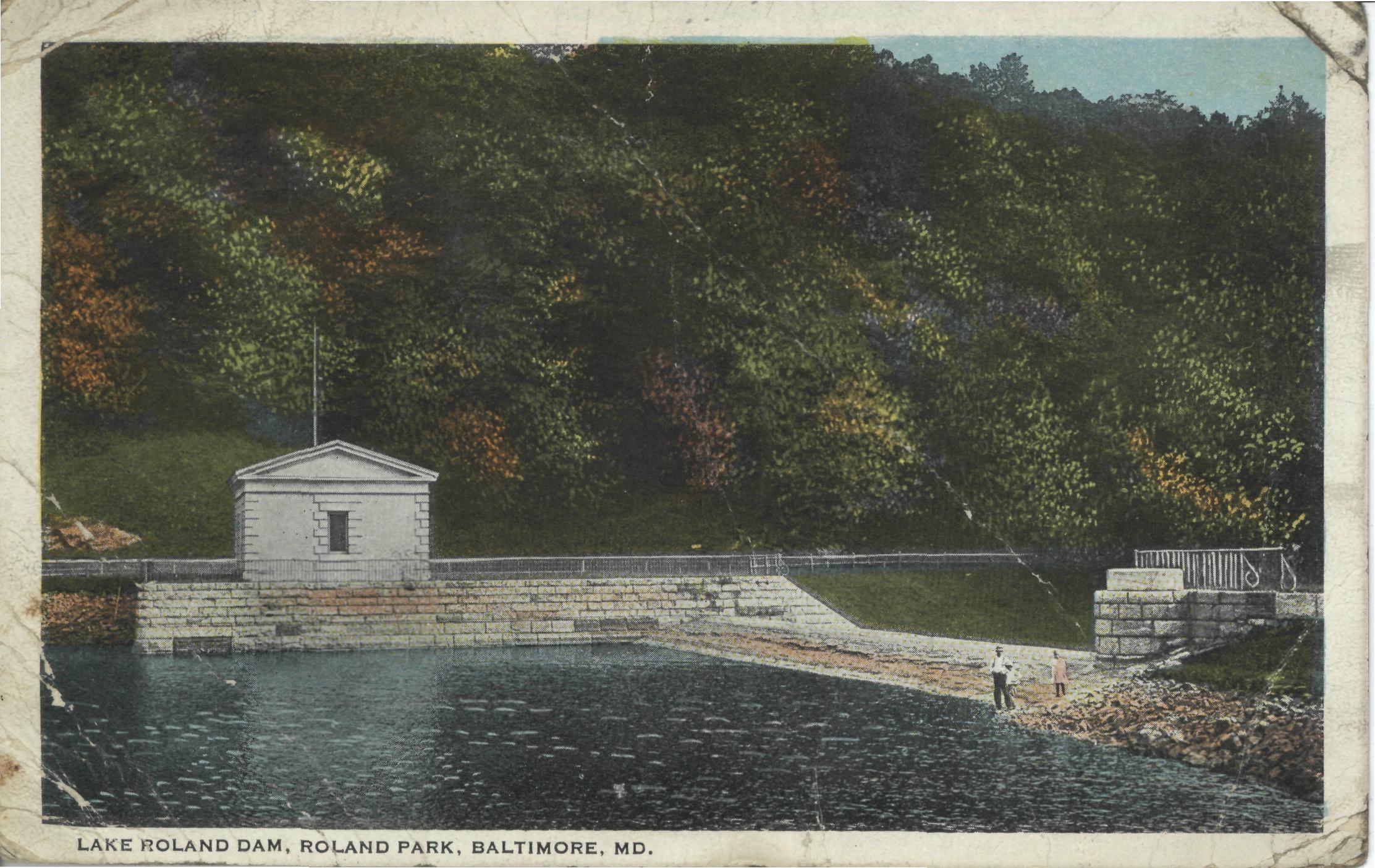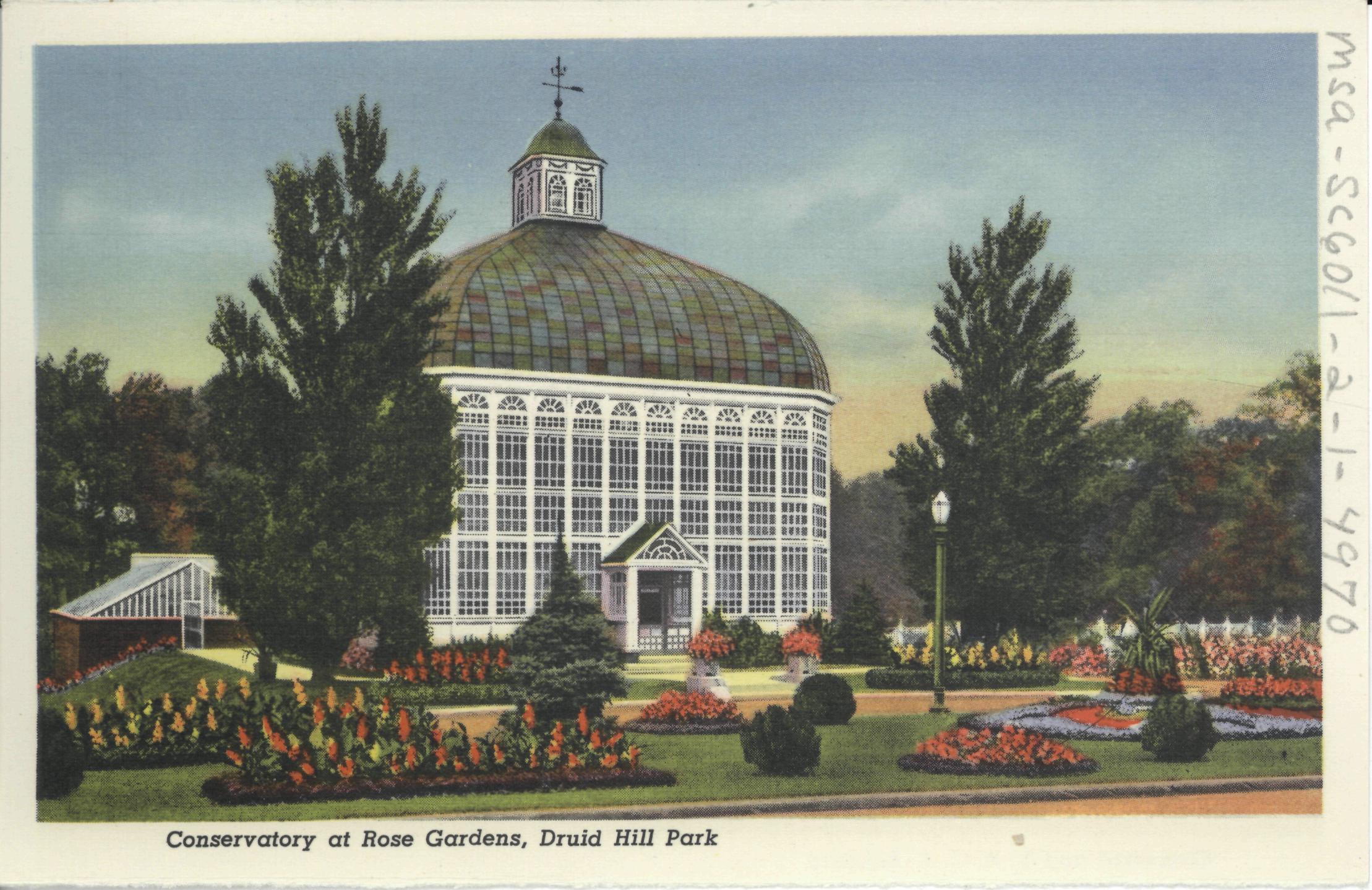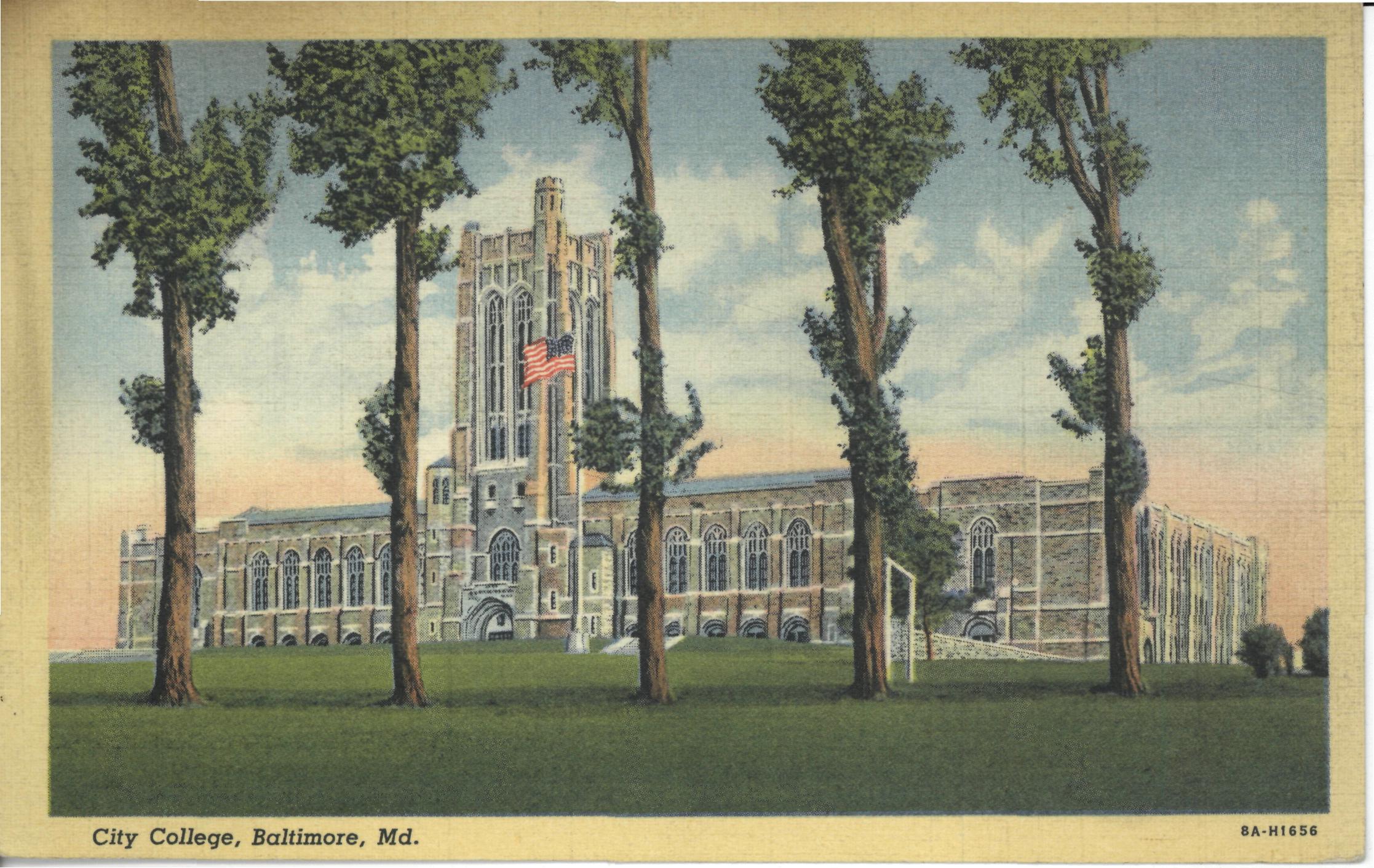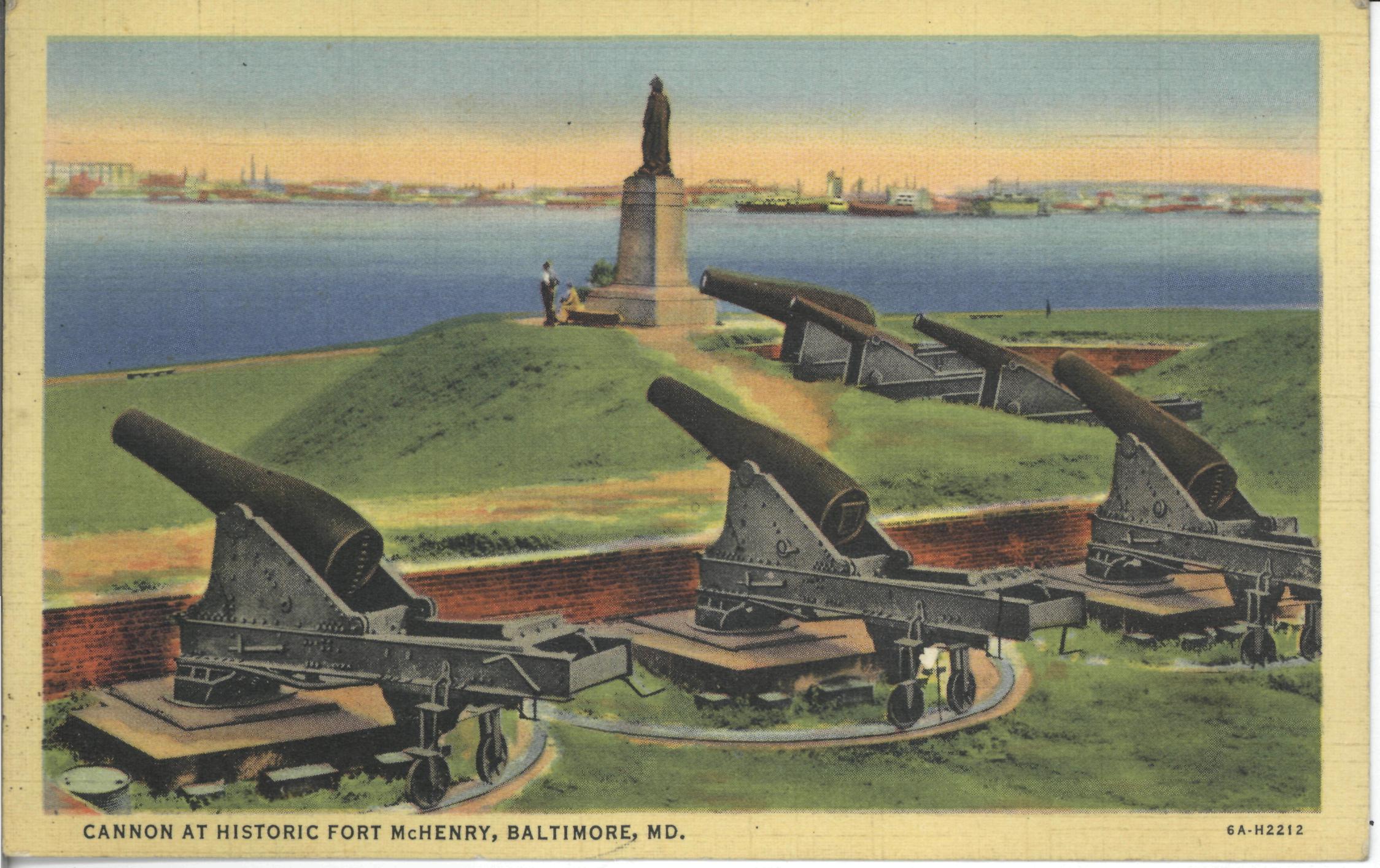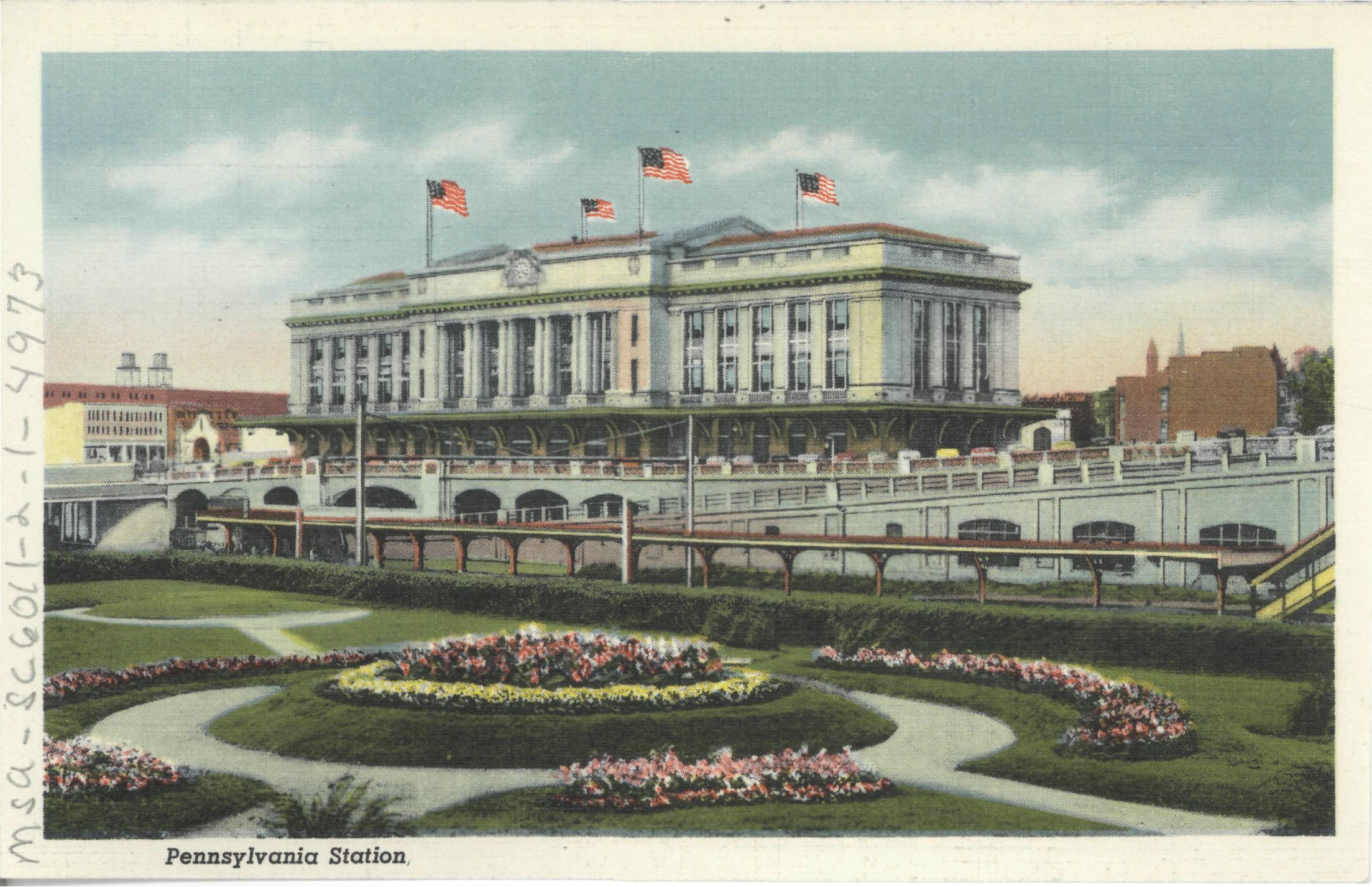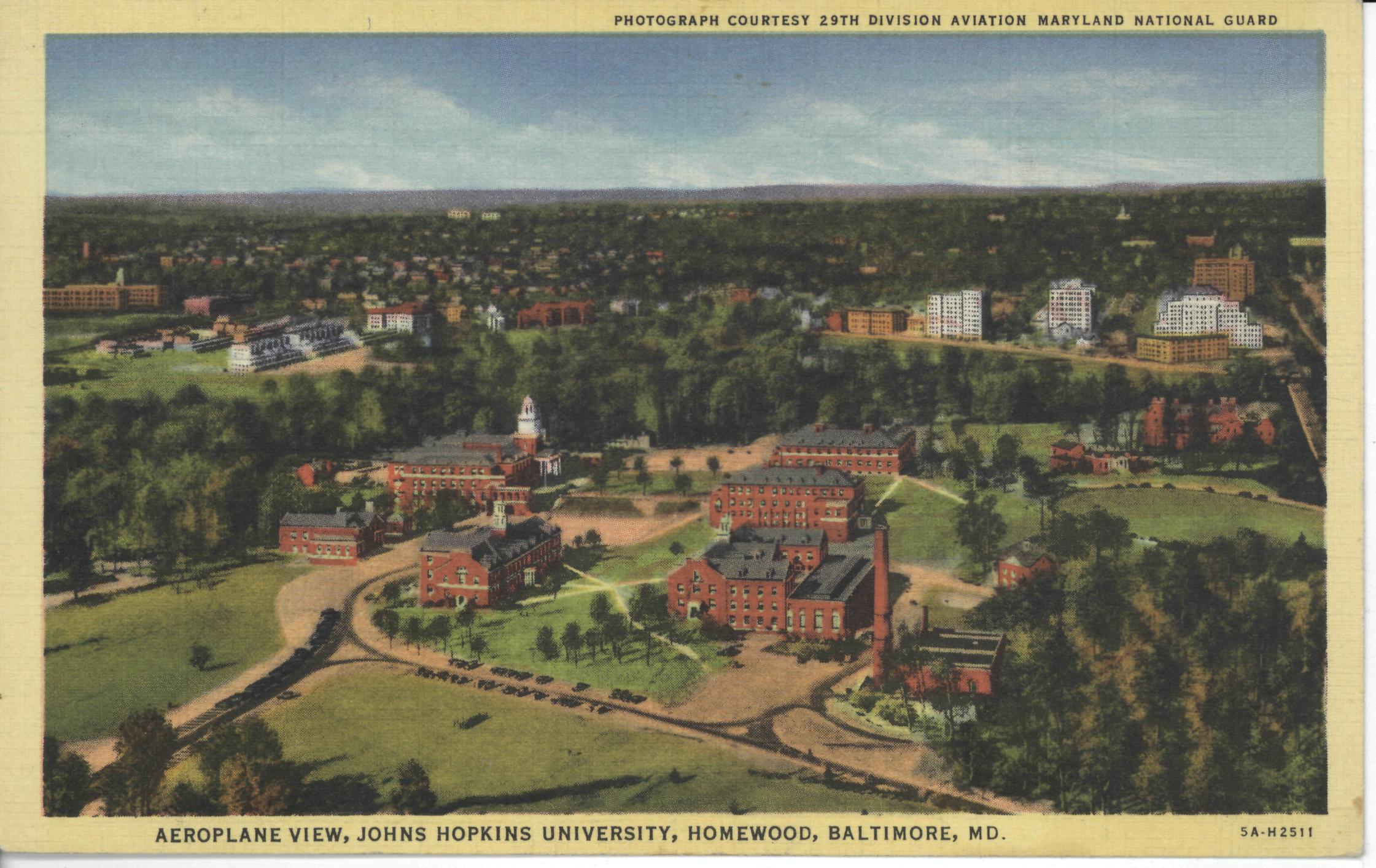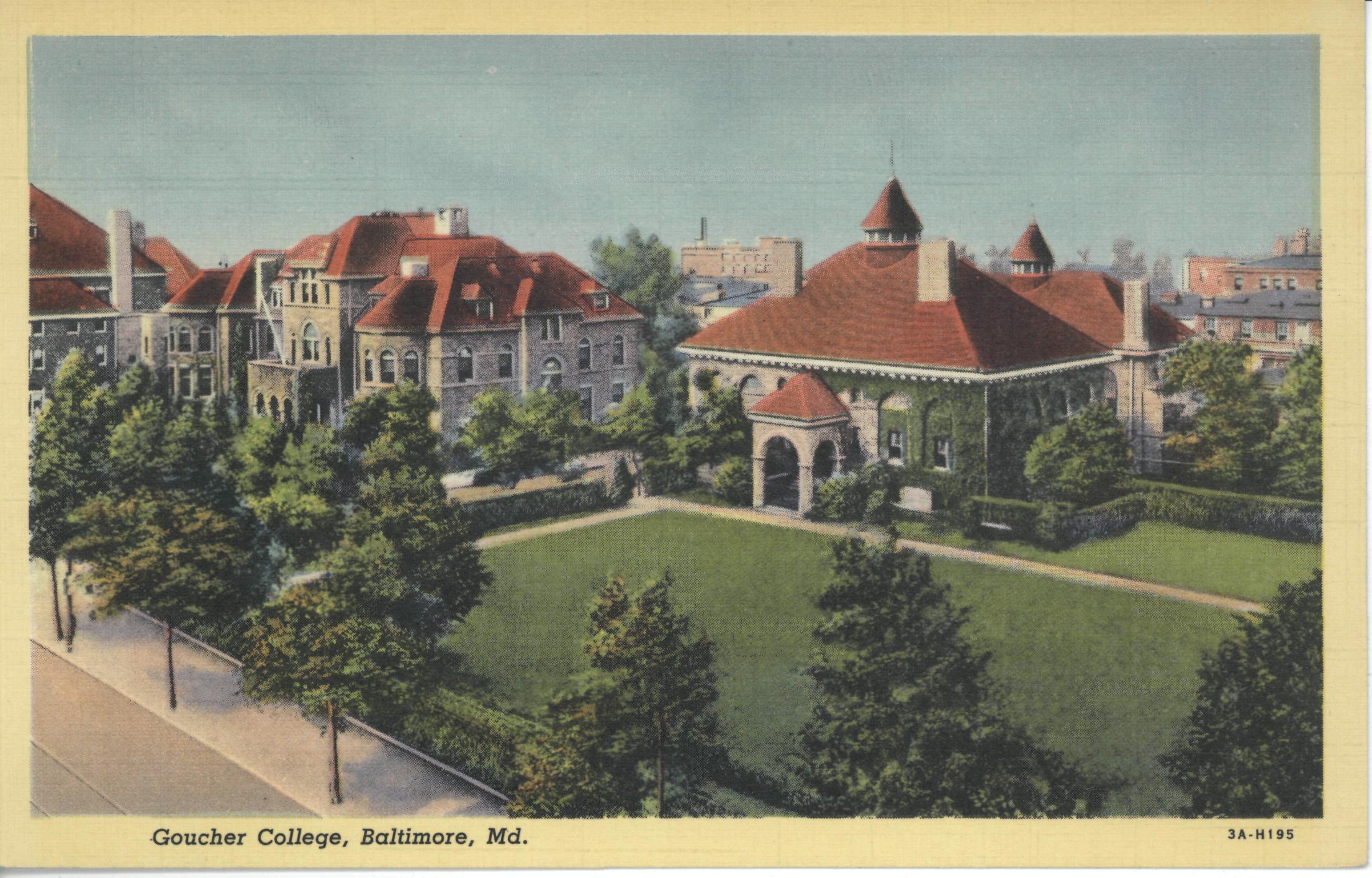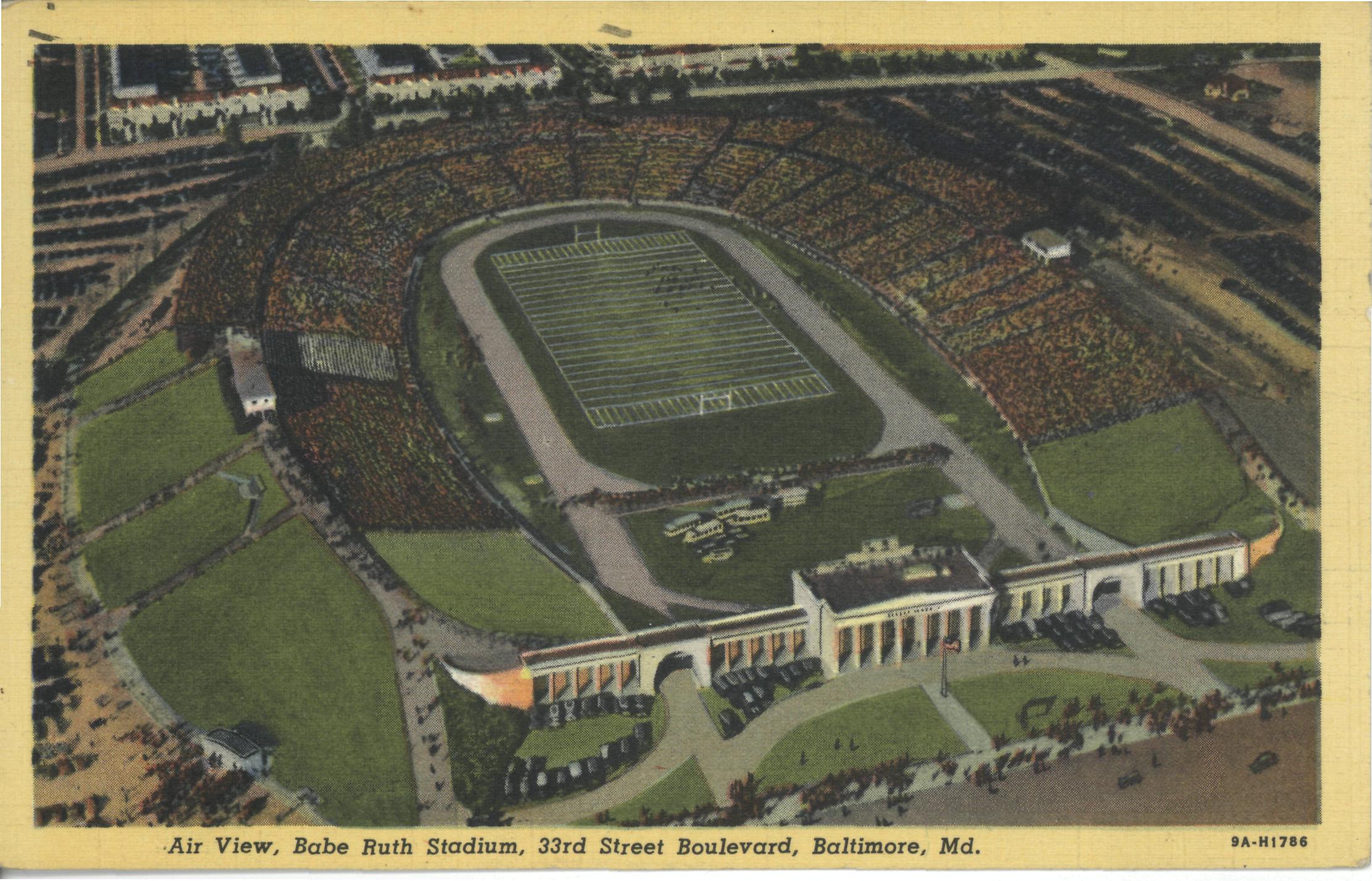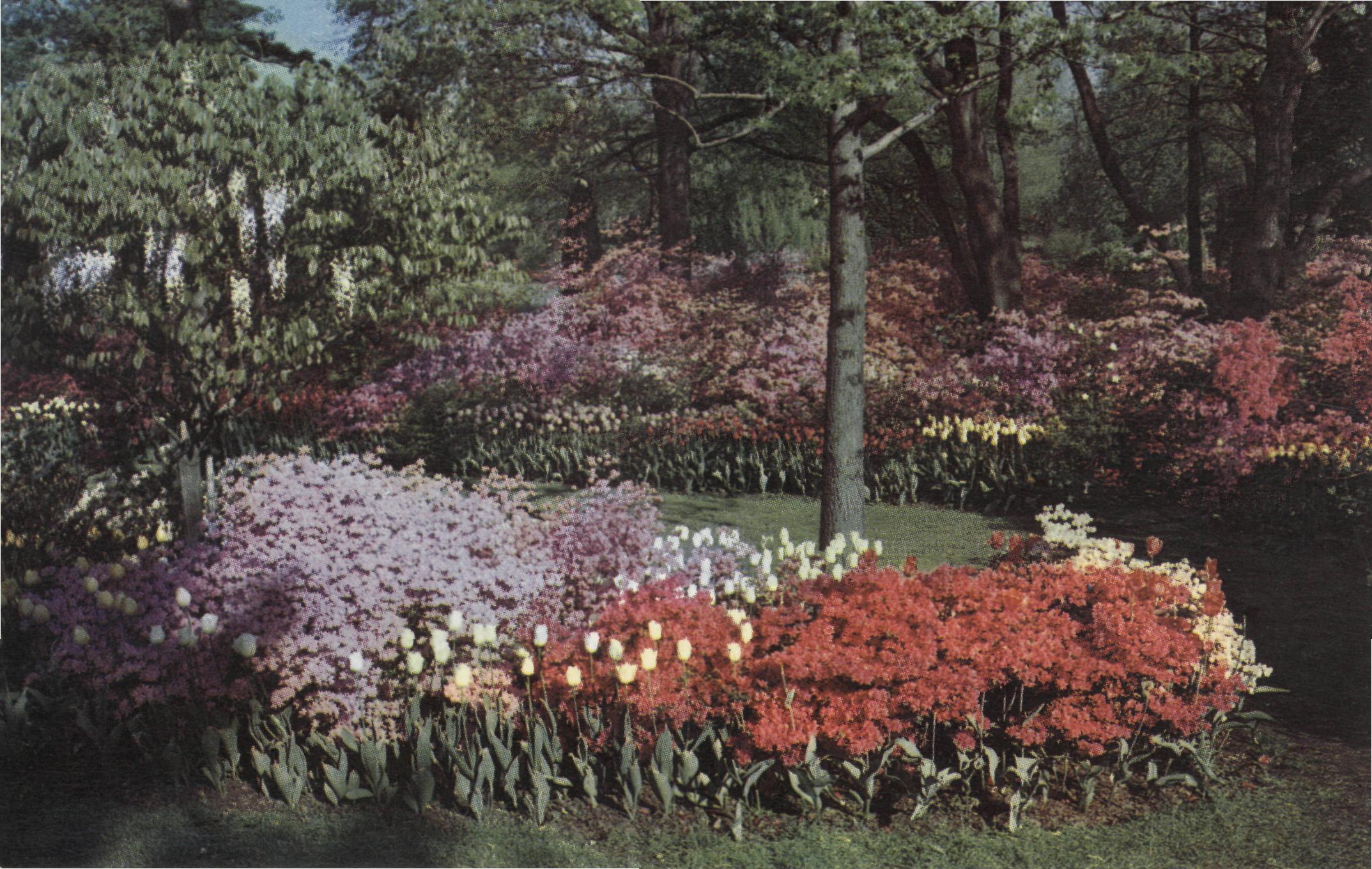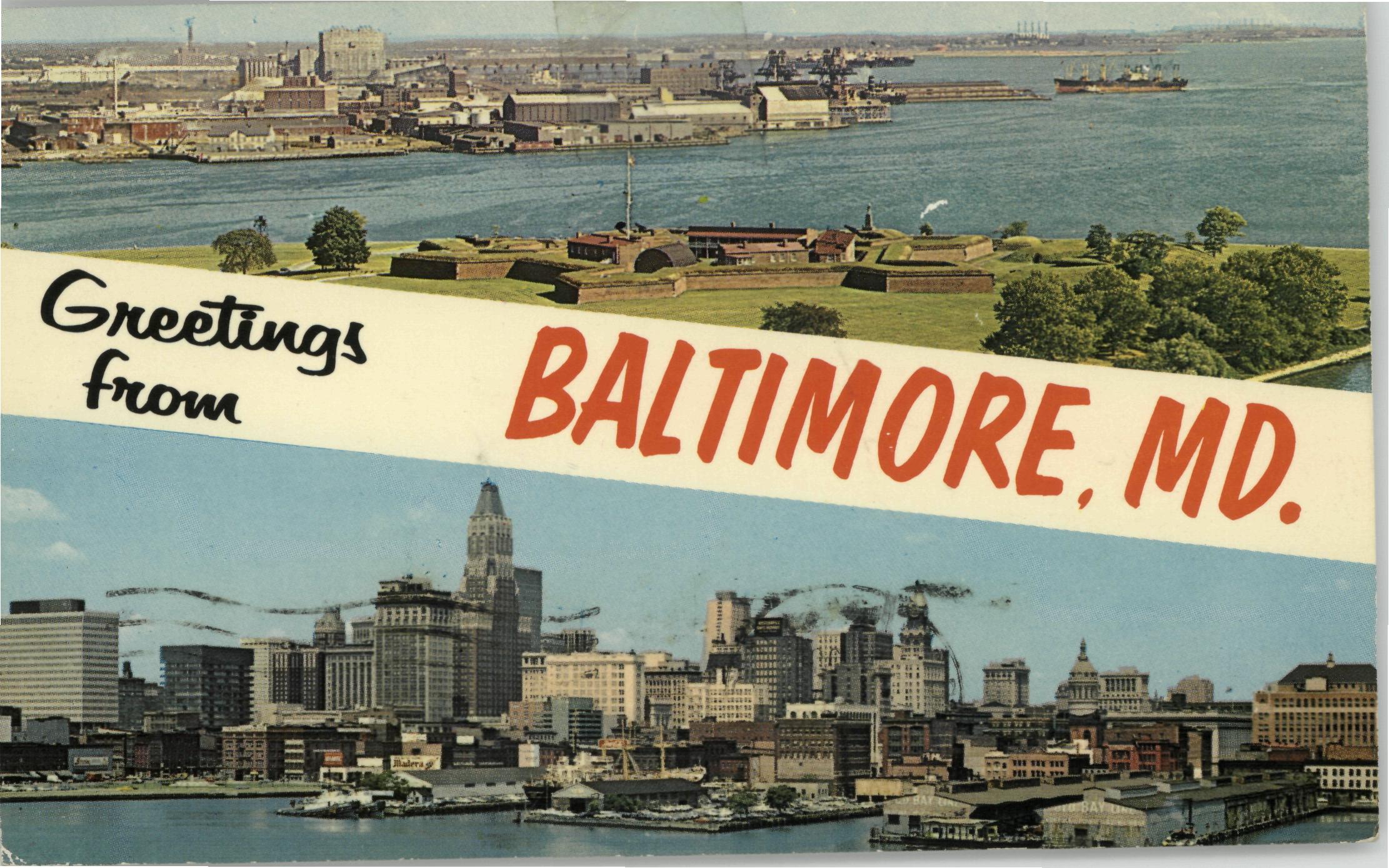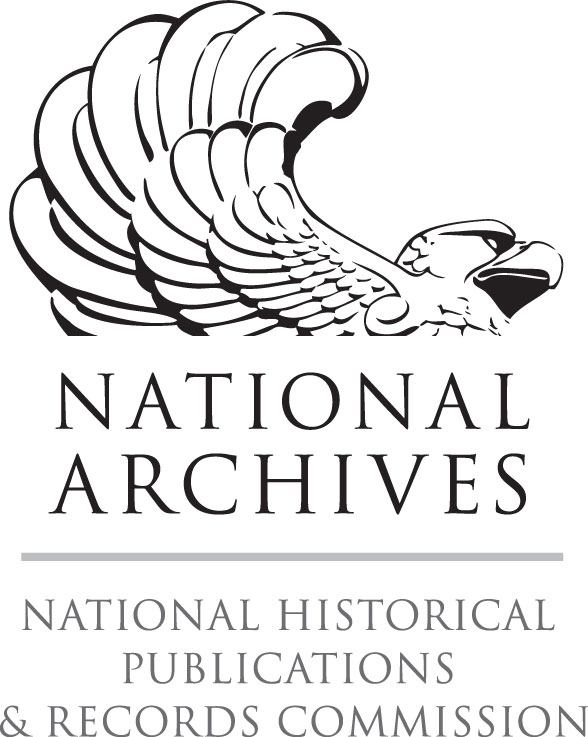Historic Baltimore Postcards
At the dawn of the 20th century, postcards were a new and affordable method of sending a message, sharing where you had been, or simply obtaining a pretty image for your own collection. Historical postcards are a snapshot into the daily lives of our predecessors and a chance to admire places long gone or drastically altered.
From the late 1800s until about World War One, the finest quality postcards were printed mostly in Germany, with images provided by American publishers. During the war, ink rationing in Germany allowed American printers to take over the lion’s share of the postcard market, at the cost of image and paper quality. Over time, more and more postcards were printed relatively near their geographical subject matter. In Baltimore, companies like I. & M. Ottenheimer and M. Levin published postcards of local monuments, buildings, and parks.
Originally, postcards had the image and memo area on the same side, as seen on the Electric Park postcard. Soon, the “front” was divided to contain both memo and address on the same side, letting the image dominate the back. American manufacturers saved money by adding the white borders, like on the Lake Roland Dam postcard, and printing on heavily textured “linen” paper, as seen on the City College card. In the 1960s, mass-producing photographed images became cheap enough that the photocrome card we know today soon took over as the most widely produced kind of postcard.
These postcards were selected from the Jim Bready Collection of postcards here at the Archive to herald the return of spring. Bright, green, and showing people enjoying the outdoors, the selection includes examples of places long gone, such as Electric City, Memorial Stadium (here called “Babe Ruth Stadium”), and the Boat Lake at Druid Hill Park. Others are merely changed, such as Penn Station, Prescott Gardens, and the Baltimore City Jail. Regardless, all the postcards are a colorful glimpse into Baltimore’s past.
Postcards
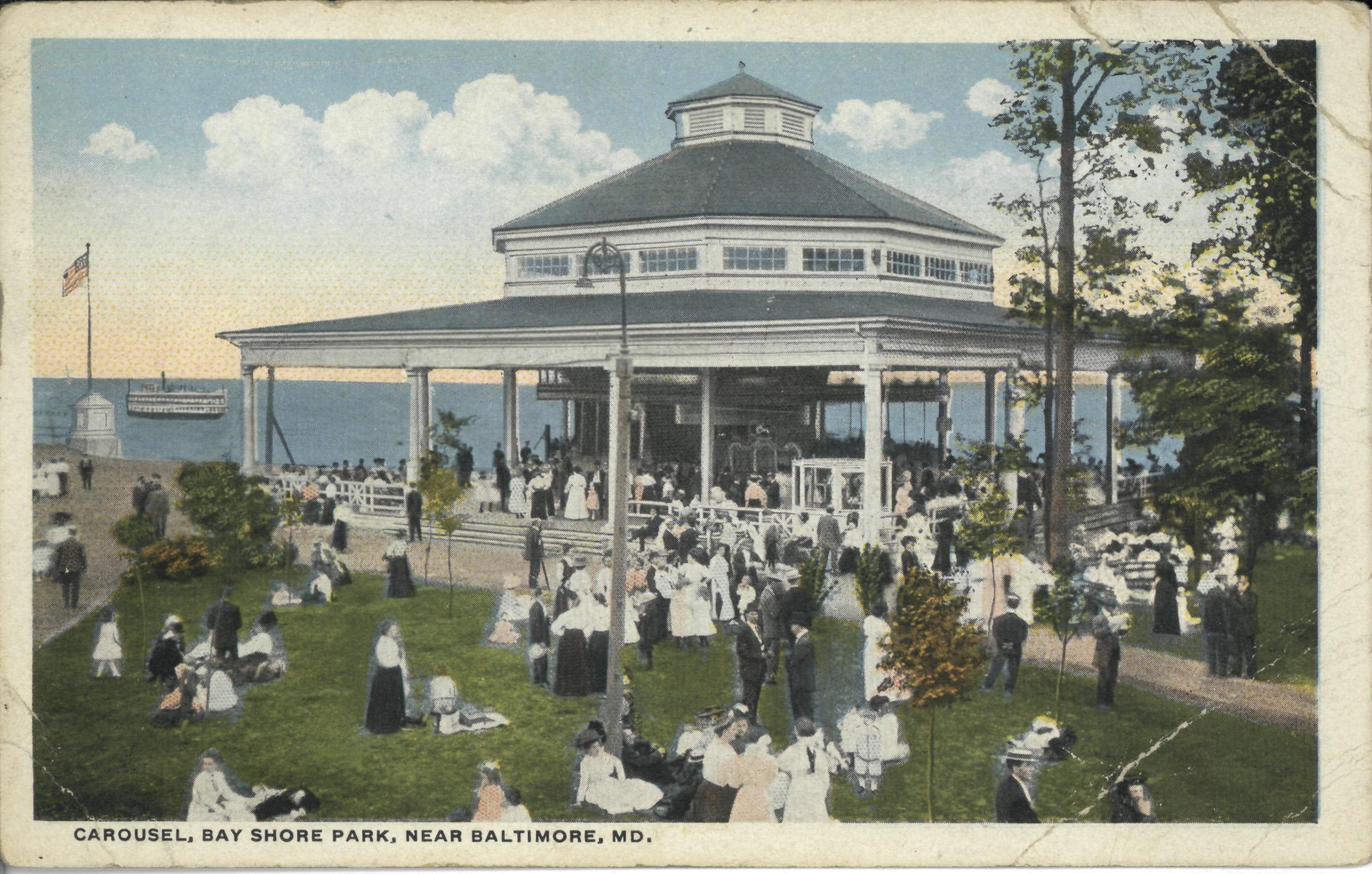
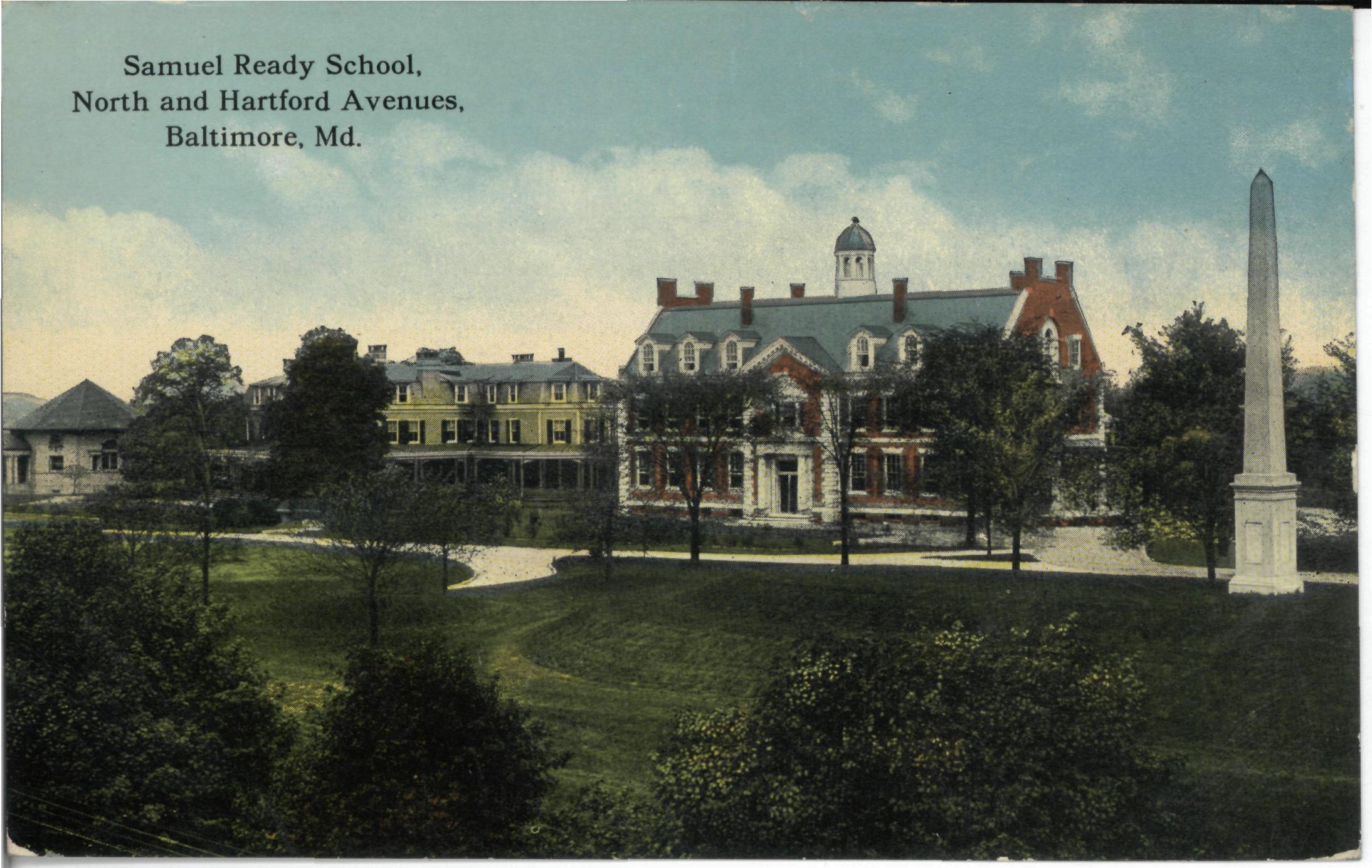
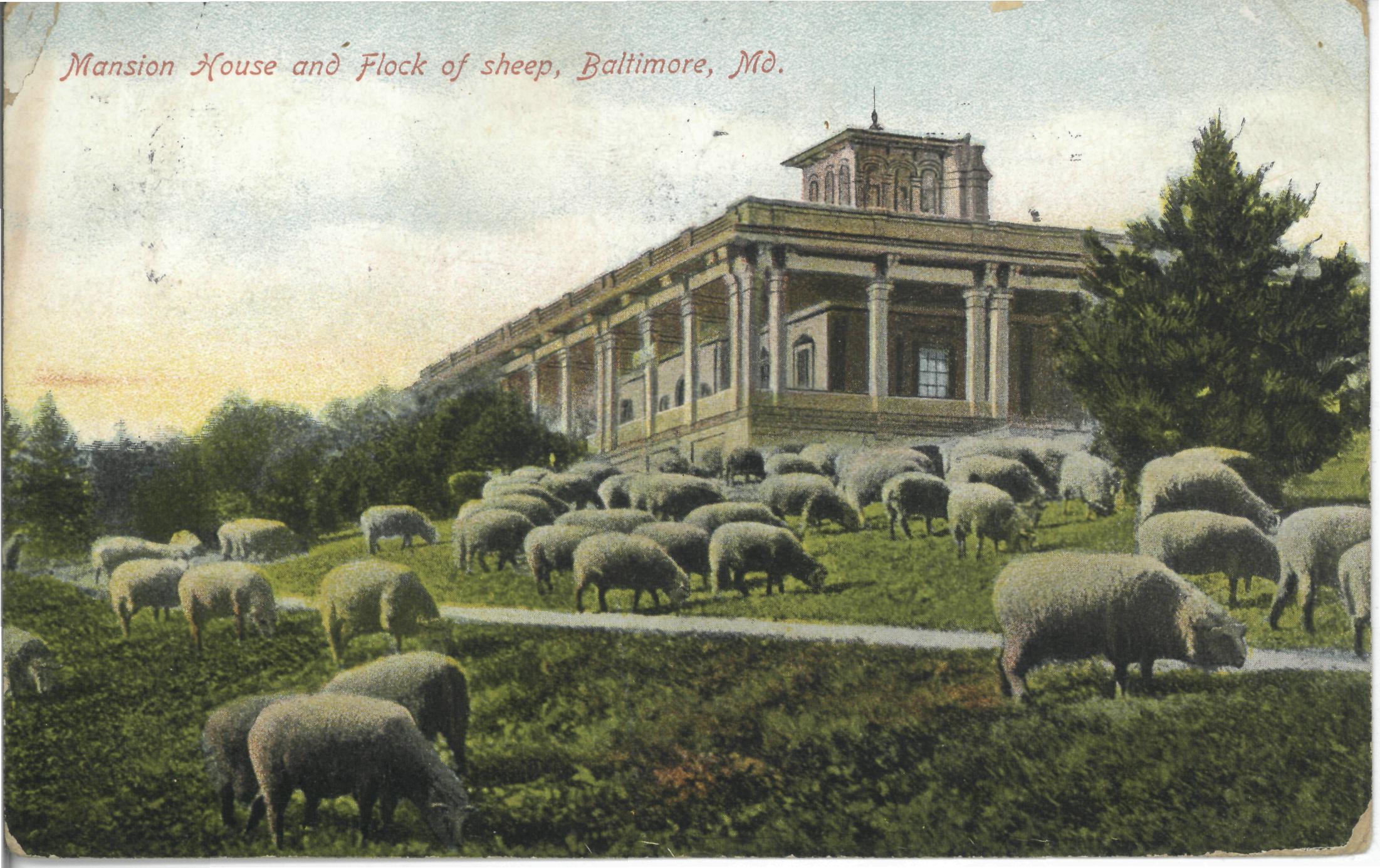

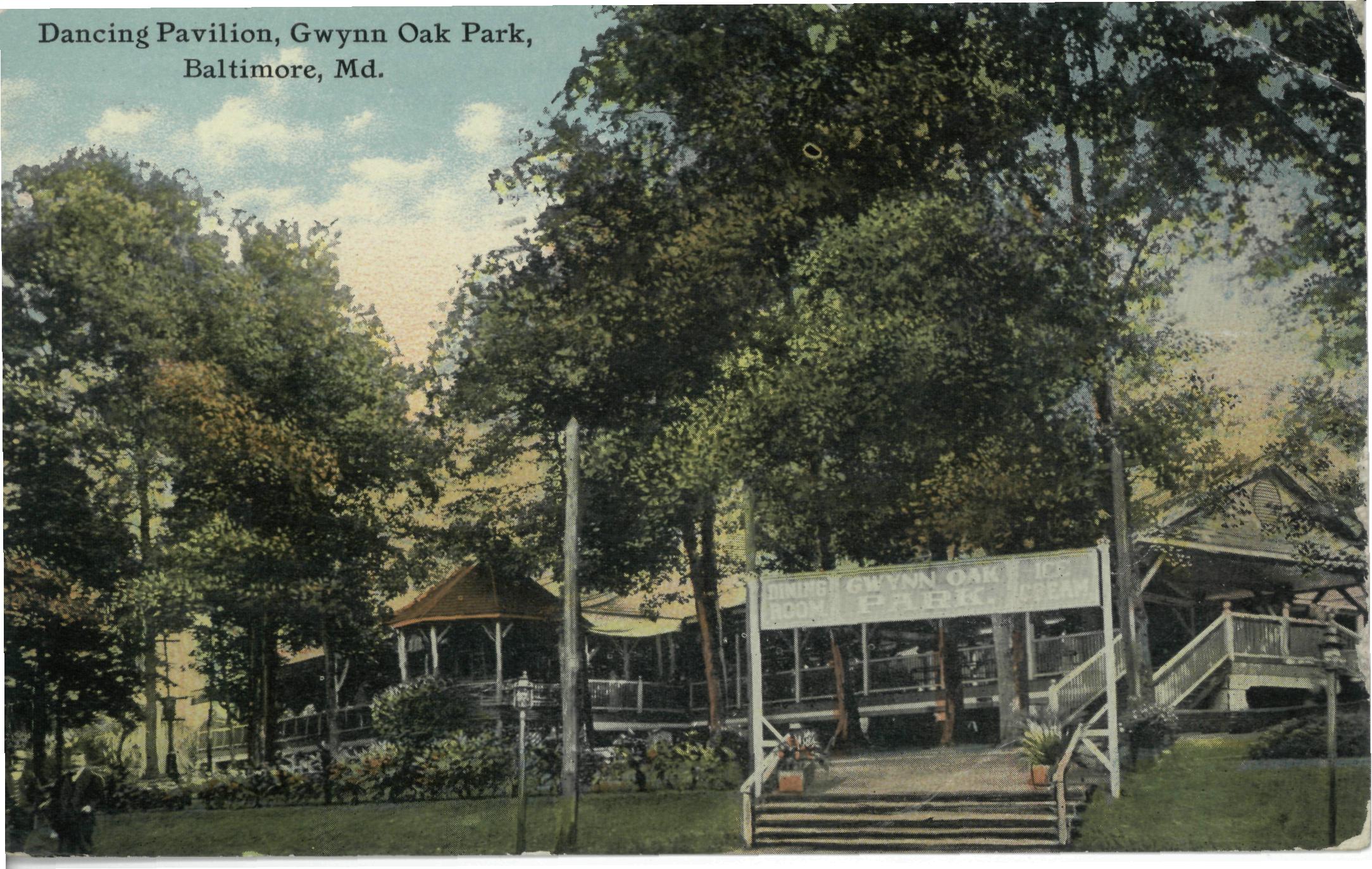
![Postcard of Gywnns Falls at gwyn[n] Oak Park circa 1909](/bca/files/2018/02/msa_sc6011_2_1-1035.jpg)
This web site is presented for reference purposes under the doctrine of fair use. When this material is used, in whole or in part, proper citation and credit must be attributed to the Maryland State Archives. PLEASE NOTE: The site may contain material from other sources which may be under copyright. Rights assessment, and full originating source citation, is the responsibility of the user.
Tell Us What You Think About the Baltimore City Archives Website!
[ Archives' Home Page ||
Maryland Manual Online ||
Reference & Research
|| Search the Archives ||
Education & Outreach || Archives of Maryland Online ]

